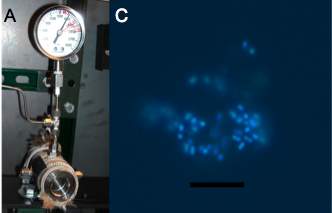
CSS is currently being implemented as a strategy to mitigate atmospheric emissions of CO2, and help stabilize atmospheric greenhouse gas concentrations. In CCS, carbon dioxide is separated and captured from an industrial process stream, before being compressed and injected deep underground into geological formations (e.g. hydrocarbon or salt-water filled (saline) reservoirs) for storage on time scales of 1,000 years or more. Natural saline formations are biologically active environments that will be profoundly changed by the injection of CO2, potentially affecting both short-term injection operations and long-term storage of CO2. Little is known about how the subsurface microbial ecosystems will affect trapping mechanisms or the operational efficiency of CO2 injection into natural saline formations. We are investigating how geological carbon sequestration affects the subsurface microbiota and the biological processes that mediate potential biogeochemical transformations of subsurface carbon dioxide.
